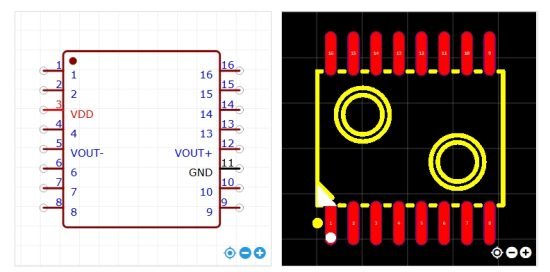Catalogar
In practical applications, differential pressure sensors are a crucial component of IoT and building management systems. By measuring the pressure differences between two points in a fluid or air flow, these sensors provide real-time data that helps operators make accurate decisions. The following sections offer a comprehensive look into the device’s performance based on actual testing records—from technical principles to user feedback.
1. Operating Principles and Technical Background
Differential pressure sensors are designed to detect the difference in pressure between two points. They employ highly sensitive elements that convert physical pressure into electrical signals. These signals are then amplified and processed to yield data proportional to the pressure difference. With built-in calibration and temperature compensation, the sensors deliver reliable readings even under varying environmental conditions.
2. User Needs and Selection Considerations
For customers considering these devices, core performance metrics are only part of the story. Price and overall value play significant roles. When selecting a sensor, users typically evaluate not only the accuracy and stability of the sensor but also its compatibility with existing systems and long-term maintenance costs. This ensures that the investment aligns with the overall system performance.
3. Price and Cost-Effectiveness Evaluation
Differential pressure sensors on the market span a wide price range—from entry-level models to industrial-grade units. Based on our testing, we recorded performance metrics such as response time, accuracy, and durability for various models. Our findings suggest that products offering a high cost-performance ratio tend to deliver stable outputs and lower maintenance costs, meeting the demands of most building management systems.
4. Product Integration and System Compatibility
Integration of differential pressure sensors requires seamless connection with various control modules and data acquisition systems. In our real-world application, we connected the sensors to smart controllers using standard communication protocols to ensure smooth data transmission. The tests revealed that, whether using analog signals or digital interfaces, the sensors quickly adapted to system requirements, maintaining reliable data transfer throughout.
5. Experimental Testing and Performance Data

During extended lab tests, the sensors were continuously monitored to record key metrics such as response time, drift, and environmental adaptability. For instance, under simulated high and low temperature conditions, the sensor’s output error remained minimal with excellent repeatability—demonstrating its reliability in practical scenarios. The recorded data confirmed that the product performs exceptionally well even under high-frequency data collection, fulfilling the strict requirements of real-time monitoring.
6. User Feedback and Improvement Suggestions
Feedback from actual users highlights strong performance in terms of data stability and response time. Some users pointed out that under extreme conditions, certain models could benefit from enhanced temperature compensation. Suggestions for future versions include refining the hardware design and further stabilizing the software algorithms to achieve even greater accuracy and longer service life.
Conclusión
Based on actual testing and user experience, differential pressure sensors prove to be highly practical in IoT and building management applications. Whether it’s data acquisition, system integration, or ongoing maintenance, these sensors offer a well-balanced solution at a reasonable price. The empirical data supports continuous product improvements and provides a solid reference for users when making their selections.
La introducción anterior sólo toca la superficie de las aplicaciones de la tecnología de sensores de presión. Continuaremos explorando los diferentes tipos de elementos sensores utilizados en diversos productos, cómo funcionan y sus ventajas y desventajas. Si desea obtener más detalles sobre lo que se analiza aquí, puede consultar el contenido relacionado más adelante en esta guía. Si tiene poco tiempo, también puede hacer clic aquí para descargar los detalles de estas guías. Producto del sensor de presión de aire datos PDF.
Para obtener más información sobre otras tecnologías de sensores, por favor Visite nuestra página de sensores.

